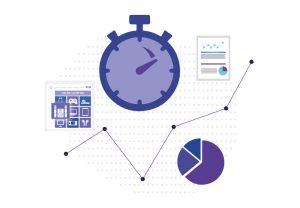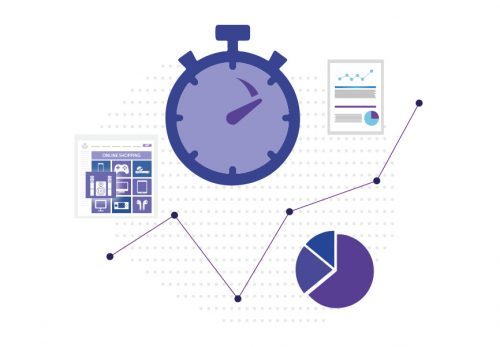
When the price is a problem… use price monitoring and retargeting!
- 01 September 2020

If you run e-commerce, you surely know a pleasant feeling that accompanies you when you see orders coming in. Your work is important and effective because you offer your customers what they need. The income is also satisfying. Sometimes, however, everyone who sells online also experiences emotions from the opposite extreme. In-store traffic continues, but the number of orders is far from expected. Then you start to wonder what could have caused this situation and you are looking for the right reason… Maybe it’s just that time of the month when everyone is waiting for their salary and therefore not buying? Maybe consumers are waiting for a new product is to launch and deliberately withhold their purchases? You check various scenarios and concepts until you finally find the right one … Competition has lowered prices and your offer is no longer even close to the best on the market. So, are the only things left for you either participating in a price war or losing customers who viewed the product but went to the competition to buy it? In this article, we’ll try to prove to you that it’s not necessarily that bad…
If you have experienced a significant drop in orders, one of the first things worth checking is the competitiveness of your offer. Depending on the industry in which you operate, the price differences vary. Of course, the quality of the after-sales service and the variety of delivery forms are also important, but let’s face it – in recent years, e-commerce customers have learned very well to look for the cheapest offers on the Internet, and we also know that nobody likes to overpay if they can buy something cheaper. So where do you get reliable and, above all, quickly available information about the prices of products that your competitors are also selling? Price monitoring tools such as Dealavo are ideal for this purpose. Thanks to alerts, you will be informed in an automated manner about changes in prices of products you sell in competitive stores.
Once you have established that the situation has actually happened, you have the basis and the motivation to react. However, the reduction in price will not make the customers who previously viewed the product come back on their own. Well, unless you let them know … It seems the situation is hopeless – you don’t have any contact details for the majority of users who haven’t made a purchase. So how are you going to convince them? Anonymous traffic and abandoned cart recovery tool can help. With it, you get a chance to convince them to come back and increase the chances of buying on your site. In this way, you will be able to recover up to 30% of conversions that have already been written off.
Let us analyze an exemplary scenario. For its needs, we will assume that you run a shoe store online. The price monitoring tool has informed you about the price reduction of several models of children’s footwear that have been selling well in your store so far. After all, September is approaching and the competition is awake. Children will need school shoes and sturdy rain shoes for this fall. This coincides with a serious drop in orders and you decide to do something about it. You check in the Dealavo platform what are the prices on the market today. Using the tool for this purpose, you know the prices including discounts applied by your competitors, to be sure that you guarantee your customers the lowest offer on the market or get back on the selected position in the ranking (for example 2nd cheapest). Your next step should be to establish a discount that will still allow you to earn while lowering the price to a level that is attractive to your customers. The next stage is planning the campaign in Revhunter. This one offers to cater to four groups of anonymous audiences – those who visited the home page, those who visited the category page, would-be customers who viewed specific products, and those who abandoned their carts. You send a message to each of these groups, tailored to the products they viewed on the website or recommended to them. Of course, not all of them saw children’s shoes, but in the message, you also add a banner with information about an additional discount code for children’s shoes, which, when used in the basket, will reduce its price by X% to the assumed level, as an additional incentive.
How will this affect users? Let’s analyze it in terms of the depth of visits of individual groups on the website and their position in the conversion funnel:
- The very top of the sales funnel. Users who only viewed the home page. In this case, we do not know what products are of interest to this group of visitors. There is a certain chance that the discount on children’s shoes will make them interested in the promotion and visit your store again. Even if it does not, the action will still have its result in the long term, because you provide anonymous users with another point of contact with your brand, which may result in its greater recognition in their eyes in the future.
- Top of the sales funnel. People who viewed category pages. Their location in the funnel informs that they are interested in a specific group of products. In their case, retargeting can be a great basis for upselling. In addition to presenting them with products from the categories that they were interested in when visiting the website, you can persuade them to buy an additional assortment that they did not intend to buy before, in this case, children’s shoes.
- Bottom of the sales funnel. People who viewed specific products. Most of these people probably decided to look for them cheaper from competitors after seeing a few pairs of shoes. In the case of sending to people who viewed product cards, the retargeting message will contain exactly the products seen previously. If there are people who have viewed children’s shoes among them, an additional discount will most likely persuade them to make a purchase decision. The main message, however, is to present the previously seen products, so either way, you will increase the conversion on the rest of the range.
- The last stage of the conversion funnel. People who have abandoned the shopping cart. The statistics are brutal. According to research by the Baymard Institute, as much as 70% of shopping carts in e-commerce are abandoned. These are the customers straight before finalizing the purchase. This means that they will react the most to the additional discount, and if the offer turns out to be the best, they will most likely come back and finish the shopping. As in the case above – if they abandoned the basket with a product other than children’s shoes, they will, first of all, see an incentive to buy these products and some of them will complete their purchases, regardless of the discount granted by you. And those who added children’s shoes to the baskets will definitely come back because of the best offer.
Of course, customers abandon their baskets for all sorts of reasons. The price is not always the main one, so applying a discount is not always a necessity. Here, we considered a case in which we wanted to break the purchasing barrier, which is the price of a specific product group. Sometimes the user is simply distracted while shopping and then you can just remind them about unfinished purchases. Also then Revhunter will be perfect, and in-depth e-commerce analytics, with the use of tools such as price monitoring, will even boost its effectiveness in increasing conversions. If you want to know more about how email retargeting works and how it is possible to get the message through to a user without knowing his address, we encourage you to familiarize yourself with the possibilities of this tool on their website.
Paweł Zasuń, Senior Marketing Specialist, Revhunter